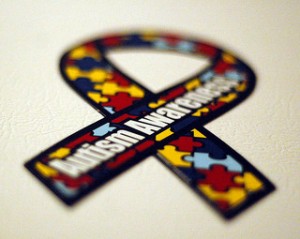Hispanics Face Bigger Hurdles When Dealing With Autism
 By Hope Gillette, Voxxi
By Hope Gillette, Voxxi
Autism rates are on the rise for Latinos, and the Center for Disease Control (CDC) reports 7.9 diagnosed cases of autism spectrum disorders (ASDs) for every 1,000 Latino children in the United States. The prevalence increased by 110 percent between years 2002 and 2008, and was the highest increase of any examined demographic group.
Overall incidences of ASDs are still lower than in blacks and non-Hispanic white children, but statistics show 1 out of 88 children in the United States have some form of autism.
As the fastest growing minority in the country, Hispanics are facing significant obstacles when it comes to treating autism. Language and culture, access to medical care, availability of information, and legal concerns are all potential barriers to proper medical care.
Fiesta Educativa’s Executive Director Irene Martinez told EGP News, “Partly it has to do with language, most of the information out is in English, most of the conferences, most of the trainings. Sometimes they are afraid – it’s an element,” she said. “For the most part, the children are born here but the parents are not, so they are afraid they are going to get into some legal difficulties, so that holds them back from getting the services they have a right to, by law.”
Another hindrance for Latino families is their economic standing. According to a study in the journal Pediatrics, autistic children are likely to do better if their parents are white and well-educated. The study didn’t investigate why the disparities exist, but the Huffington Post reports it’s likely affluent parents are able to fight for better medical services, have access to those services, and live in better neighborhoods.
“Although we are unable to identify the specific mechanisms through which socioeconomic status affects trajectory outcomes, the intervening variables likely include home and neighborhood environments, quality and intensity of treatment, quality of education, the efficacy with which parents are able to advocate for their children with institutions providing services, and many other factors in various permutations,” explained the study authors.
The overall increase in autism cases in the United States is up by 23 percent since 2009.
“This information paints a picture of the magnitude of the condition across our country and helps us understand how communities identify children with autism,” said Health and Human Services (HHS) Secretary Kathleen Sebelius in a recent statement. “That is why HHS and our entire administration has been working hard to improve the lives of people living with autism spectrum disorders and their families by improving research, support, and services.”
Hope Gillette is an award winning author and novelist. She has been active in the veterinary industry for over 10 years, and her experience extends from exotic animal care to equine sports massage. She shares her home with four cats, a dog, a horse, and her tolerant husband.
This article first appeared in Voxxi.

